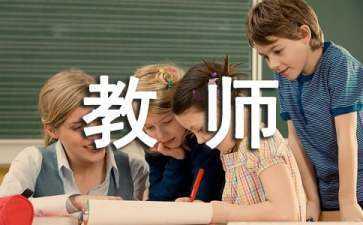Unit 8 A camping trip Period(通用6篇)
Unit 8 A camping trip Period 篇1
teaching aims:
1. 能听得懂、会说、会读和会拼写单词a telescope, a tin-opener, a pot, a stove, a blanket, a towel, a hill, show, children.
2. 能听得懂、会说、会读和会写句型i have…we have… what do you have? you have…and i/we have…what do they have? they have… what does he/she have? he/ she has… we have… and they have…
3. 能听得懂、会说、会读日常交际用语和句型look, …and …are coming. great!
important and difficult points:
the usage of have and has
teaching aids:
pictures, the tape and the tape recorder.
teaching steps:
step 1: greetings
t: hello, boys and girls.
s: hello, miss…
t: how are you, today?
s: fine, thank you.
step 2: revision
look and guess: what’s this?
t, l, e, e, e, c, o, p -----telescope
o, e, e, r, n, p----opener
t, o, p----pot
e, v, o, s, t-----stove
b, e, t, l, n, a, k-----blanket
t, w, e, l, o-----towel
d, r, c, i, h, l, e, n----children
w, o, s, h----show
read part a page 60 together.
translate the key sentences.
ask some students to recite part a.
step 3: presentation and practice
look at the pictures and answer the questions below:
who are they?
what does mike have?
what does yang ling have?
what does helen have?
what does miss li have?
what does mr green have?
listen and answer the questions below:
what do su hai and su yang have?
listen and repeat.
read and translate.
fill in the blanks:
helen _____ a ____of chicken and a tin of ______. yang ling has a _________. mike has a ____ and a ______. su hai and su yang ______ two ______and a ______. miss li has a ____of ______and mr green has some______.
step 4: homework
listen and repeat part a 20 minutes.
copy the phrase three times.
a tin of chicken, a tin of fish, a tin-opener, over there, a box of chocolates, some fruit
3. make a mask
teaching notes:
Unit 8 A camping trip Period 篇2
teaching aims:
1. 能听得懂、会说、会读和会拼写单词a telescope, a tin-opener, a pot, a stove, a blanket, a towel.
2. 能听得懂、会说、会读和会写句型 what do they have? they have… what does he/she have? he/ she has… we have… and they have…
important and difficult points:
句型:what do they have? they have… what does he/she have? he/ she has… we have… and they have…
teaching aids: pictures
teaching steps:
step 1: greetings
t: hello, boys and girls.
s: hello, miss…
t: how are you, today?
s: fine, thank you.
step 2: revision
show the pictures.
read the words as quickly as they can.
spell the words after teacher.
spell the words in groups as quickly as they can.
free talks.
t: i have… what do you have?
s: i have…
t: we have… what do you have?
s: we have…
perform the dialogues of picture 1, 2.
perform their own dialogues.
step 3: presentation and practice
( give some pictures to the students and ask students to bring some real objects.)
we have… and they have…
由 you have… and we have…引出 we have… what do they have? we have…and they have…
1. read after teacher.
2. read in groups.
3. make the dialogues in page 63. picture3, 4.
4. make their own dialogues in groups.
i have… what does he/ she have?
t: hello, … i have… what does… have?
s: he/ she has ….
1. read after teacher.
2. ask and answer. (t—s)
3. make the dialogues in page 64.
4. perform the dialogues.
step 4: homework
recite the words.
finish part c, d.
teaching notes:
Unit 8 A camping trip Period 篇3
teaching aims:
1. 能听得懂、会说、会读和会拼写单词a telescope, a tin-opener, a pot, a stove, a blanket, a towel, a hill, show, children.
2. 能听得懂、会说、会读和会写句型i have…we have… what do you have? you have…and i/we have…what do they have? they have… what does he/she have? he/ she has… we have… and they have…
3. 能听得懂、会说、会读日常交际用语和句型 we all like our… look, …and …are coming. great!
important and difficult points:
the usage of have and has
teaching aids:
pictures, the tape and the tape recorder.
teaching steps:
step 1: greetings
t: hello, boys and girls.
s: hello, miss…
t: how are you, today?
s: fine, thank you.
step 2: revision
1. recite the words.
2. recite part a
3. translate the key phrases and sentences.
step 3: presentation and practice
workbook
listen and number
look and say
listen and number
check the answer
listen and answer
listen and answer.
write down the answers.
look and match
read the sentences and look at the picture.
match the sentences and the pictures.
check the answers.
look and complete
do it themselves.
check the answer.
read, talk and write
read and translate the sentences.
do the exercises.
check the answers.
step 4: consolidation
do the dictation.
a: words
b: key sentences
step 5: homework
teaching notes:
Unit 8 A camping trip Period 篇4
teaching aims:
1. 能听得懂、会说、会读和会拼写单词a telescope, a tin-opener, a pot, a stove, a blanket, a towel, a hill, show, children.
2. 能听得懂、会说、会读和会写句型i have…we have… what do you have? you have…and i/we have…what do they have? they have… what does he/she have? he/ she has… we have… and they have…
3. 能听得懂、会说、会读日常交际用语和句型 we all like our… look, …and …are coming. great!
important and difficult points:
the usage of have and has
teaching aids:
pictures, the tape and the tape recorder.
teaching steps:
step 1: greetings
step 2: warming up
listen to the song and sing the song after the tape.
step 3: revision
read part c and part d after teacher.
perform part c and part d
read part a together.
translate part a.
recite part a.
step 4: presentation and practice
part f
look and read.
listen and point: nose, head, hair, ears, eyes, mouth…
look and say.
show their own mask and introduce the mask.
part g
read the words.
say the similar words.
part e
look and say: what’s in the picture.
read the story themselves and answer the questions: what does my brother/ sister/tom/ tom’s brother have?
read the story together.
step 5: do the exercises;
1.translation:
靠近小山, 在野营营地, 互相,一次野营旅游, 一罐鸡,在那儿,一盒巧克力, 一些水果
2.用have,has或 there be的适当形式填空。
a. look, __________ some students in the classroom.
b.i’m hungry. ______ you ______ any cakes?
c. __________ any water in the bottle.
d.how many students __________in your school?
e. the girl in red______many sweets.
f. my father and mother _____ two dogs.
g._______ your brother______any books?
step 6: homework
完成练习册
准备默写
teaching notes:
Unit 8 A camping trip Period 篇5
teaching aims:
能听得懂、会说、会读和会拼写单词 a telescope, a tin-opener, a pot, a stove, a blanket, a towel.
能听得懂、会说、会读和会写句型i have…we have… what do you have? you have…and i/we have…
important and difficult points:
句型:the words and the usage of “have”
teaching aids:
pictures, the tape and the tape recorder.
teaching steps:
step 1: greetings
t: hello, boys and girls.
s: hello, miss…
t: how are you, today?
s: fine, thank you.
step 2: free talks
show the pictures: a toilet, a garden, a table tennis room, a reading room, a swindowsg, a slide, a bed, a sofa, a telephone, a lamp, a mask, a vase, a pumpkin, a chicken, a duck, a horse, a pig.
read the words as quickly as they can.
make a sentence with one word.
eg: there is a toilet in the garden.
step 3: presentation and practice
show the new pictures: a telescope, a tin-opener, a pot, a stove, a blanket, a towel.
t: today, we will learn some new things. look at the pictures and learn the words together.
read after teacher.
read one by one.
read after the tape.
make a sentence with the words.
eg: there is a telescope in the picture.
(give the pictures to the students, if he/she can make the sentences.)
ask and answer.
t: i have a telescope. what do you have?
s: i have a tin-opener.
read after teacher.
ask and answer in pairs.
t: you have a pot and i have a stove.
1.read after teacher.
2.say a similar sentence. (they can use the pictures or real objects: pen, pencil…)
we have a stove. what do you have?
you have a pot and we have a stove.
(the same way to teach the sentences.)
step 4: consolidation
ask the students to open the book and turn to page 63.
look at the pictures
make the dialogue.
picture 1: you have a towel and i have a blanket.
picture 2: you have a clock and i have a watch.
step 5: homework
copy the words 3 times and try to recite them.
finish part c picture 1,2.
teaching notes:
Unit 8 A camping trip Period 篇6
teaching aims:
1. 能听得懂、会说、会读和会拼写单词a telescope, a tin-opener, a pot, a stove, a blanket, a towel, a hill, show, children.
2. 能听得懂、会说、会读和会写句型i have…we have… what do you have? you have…and i/we have…what do they have? they have… what does he/she have? he/ she has… we have… and they have…
3. 能听得懂、会说、会读日常交际用语和句型
important and difficult points:
句型:i have…we have… what do you have? you have…and i/we have…what do they have? they have… what does he/she have? he/ she has… we have… and they have…
teaching aids:
pictures, the tape and the tape recorder.
teaching steps:
step 1: greetings
t: hello, boys and girls.
s: hello, miss…
t: how are you, today?
s: fine, thank you.
step 2: revision
1.listen and spell the words.
2.read part c,d after teacher.
3.translate some sentences.
a. 我有一个望远镜。b. 我们有一些毯子。
c. 你有一只风筝。 d. 你们有两个炉子。
e. 刘涛有一个锅。 f. 南希有一个面具。
g. 他们有一些花。 h. 你/你们有啥?
i. 他/她/他们有啥? j. 我们有啥?
2.fill in the blanks.
c. you _____ some flowers and i ______ a vase.
d.she ______ a walkman and he _____ a telescope.
e. we _____ a mask and they _____a pumpkin lantern.
f. ______ _______ some water in the bottle.
g._______ ______ some flowers in the vase.
step 3: presentation and practice
part a page 60.
explain the key words.
a camping trip
at a camping site
a big tent
near the hill
listen and answer the question.
what does david have?
where is nancy?
listen and repeat.
read and translate the sentences. ( key sentence: show… to …)
read together.
perform the dialogues.
step 4: homework
1.listen and repeat part a 15 minutes.
2.copy the phrases 3 times. (除上面的加上:show their things to each other, near her tent.)
teaching notes :
unit 8 a camping trip period 3 来自本站。
推荐站内搜索:周记一则、广东联考成绩查询、教师招聘考试、查询成考成绩、河北省自学考试报名、夺冠观后感500字、周记怎么写初一、清明节演讲稿、公务员考试试题及答案、山西大同人事考试网、


 Unit 8 A camping trip Period(通用6篇)
Unit 8 A camping trip Period(通用6篇)


